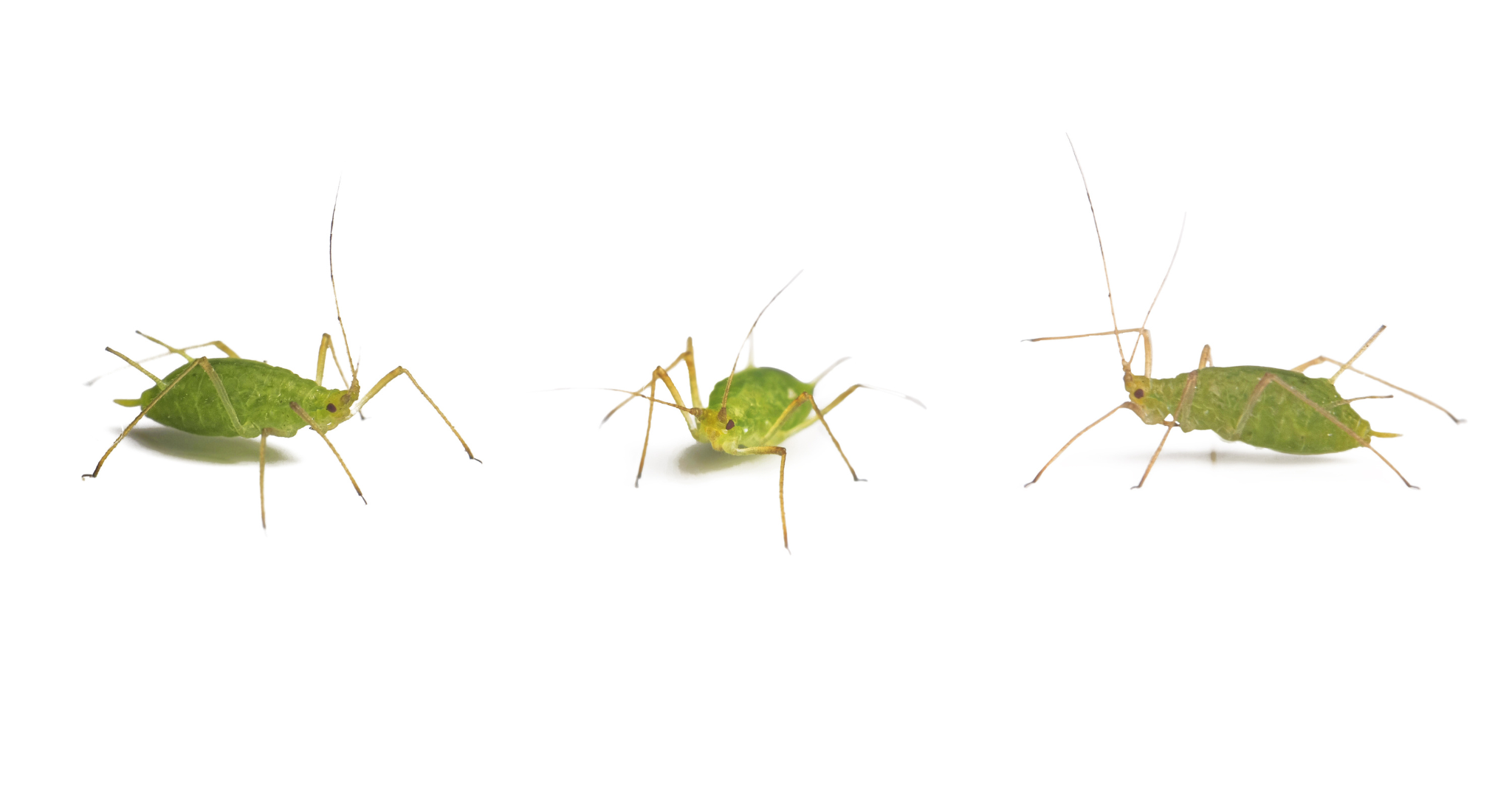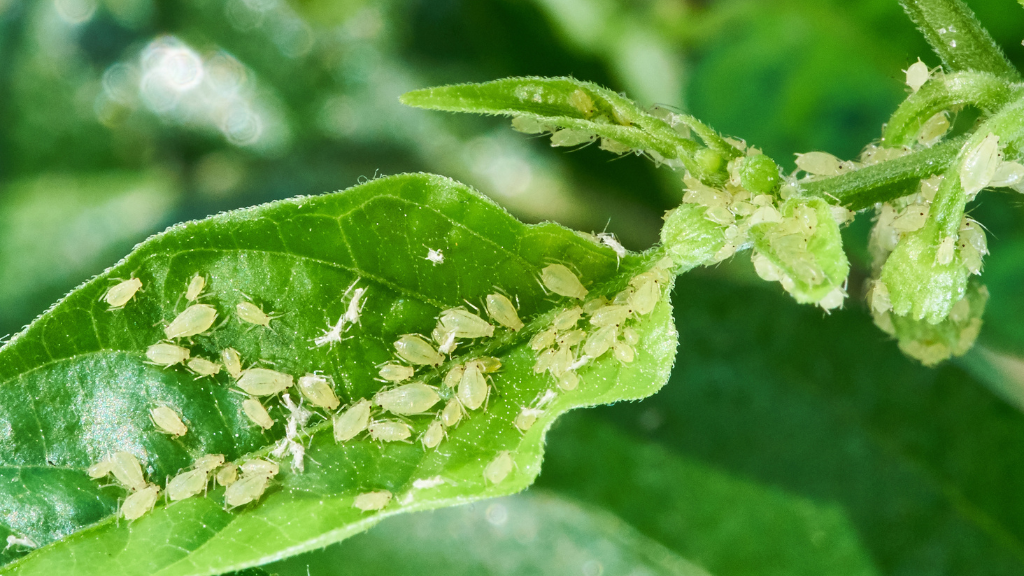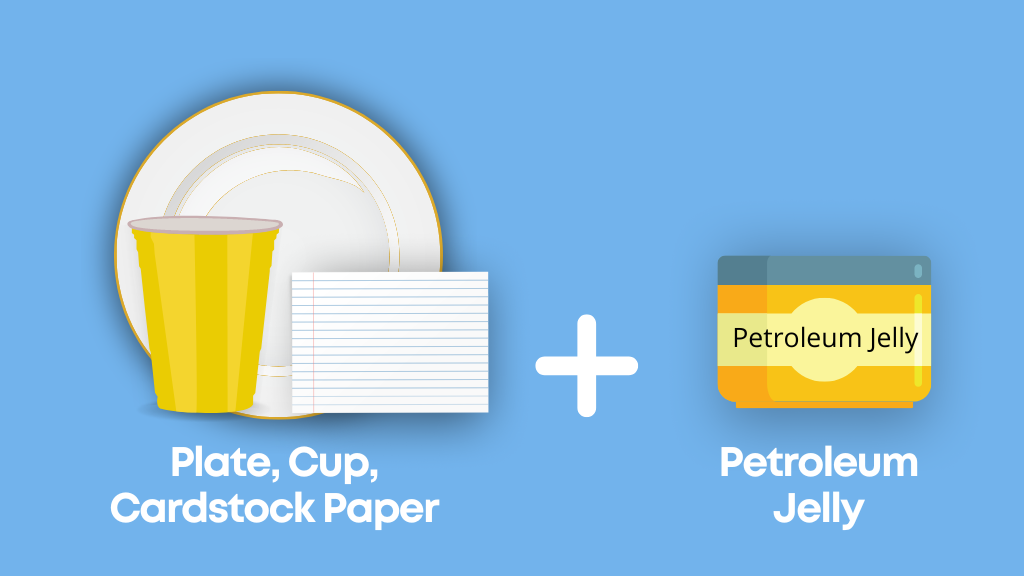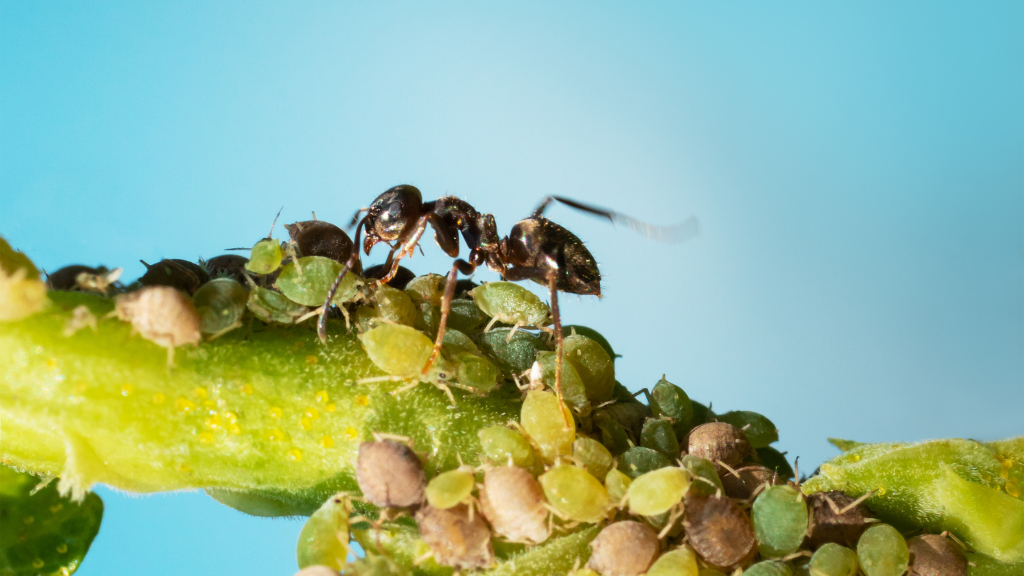Stopping Aphid Infestations

When you’ve worked hard to nurture your yard and garden, the sight of aphids crawling on your valued plants can be frustrating.
Fortunately, there are ways to stop aphid infestations, and it only takes a few minutes to craft a preventative homemade trap. With the right materials and a little persistence, you can keep aphids from feasting on your favorite plants.
WHAT ARE APHIDS?
Aphids are small (under ¼”), soft-bodied insects with piercing mouthparts that allow them to feed on the sap inside plant leaves. This feeding process damages plants, making aphids a garden pest people want to get rid of as quickly as possible. Aphids can also spread fungi (sooty molds) and viruses to the plants as they feed.
Winged aphids introduce immature aphids (also called nymphs) to host plants. Nymphs will mature in less than two weeks, and a single female aphid can produce up to 60 offspring. That’s why aphid infestations can quickly grow from a few bugs to many in a short time. Aphid colonies can devastate or even kill a plant.
MAKING AN APHID TRAP
This trap catches winged aphids that are trying to lay eggs on plants.
WHAT YOU’LL NEED
- Petroleum jelly.
- A lightweight object, such as a piece of cardstock paper, a paper plate, or a plastic cup. (Note: Experts have found that aphids are attracted to the color yellow, so if you have a yellow item, that will increase the trap’s efficacy.)
- String or twine.
- Something to hang your trap on (tree limb, shepherd’s hook, etc.).
STEP ONE
Punch a hole in your lightweight item and attach the string to it.
STEP TWO
Spread a thin layer of petroleum jelly on the lightweight item.
STEP THREE
Tie the trap to the tree limb or shepherd’s hook near your plants. Look for a covered area that can withstand wind so that the trap doesn’t blow away.
As aphids fly to your plants, they will get caught in the petroleum jelly. Replace the trap as needed, particularly after rain.
 CONTROLLING AN APHID INFESTATION
CONTROLLING AN APHID INFESTATION
To tackle aphids that are already on plants, you can spray the insects with neem oil or a solution of liquid dish soap and water.
And while you’re tackling the aphids, be on the lookout for ants. Ants love the sugary excretions aphids produce called honeydew. That’s why it’s not uncommon to see ants inhabiting an area where there’s an aphid infestation.
Since the ants will try to protect aphids against their natural predators, it’s a good idea to keep the ants away, too. You can do this by creating a simple barrier trap around the bottom of the aphid-infested plants. Just wrap some plastic wrap around the base of the infested plant and cover it with the same petroleum jelly used for the aphid trap. Ants will get stuck in the trap and not reach the plant.
While aphids are a small garden pest, you may be facing larger ones in your home or yard. Give the experts at Moxie Pest Control a call for assistance. No matter the size or your pest problem, we can help!



 CONTROLLING AN APHID INFESTATION
CONTROLLING AN APHID INFESTATION